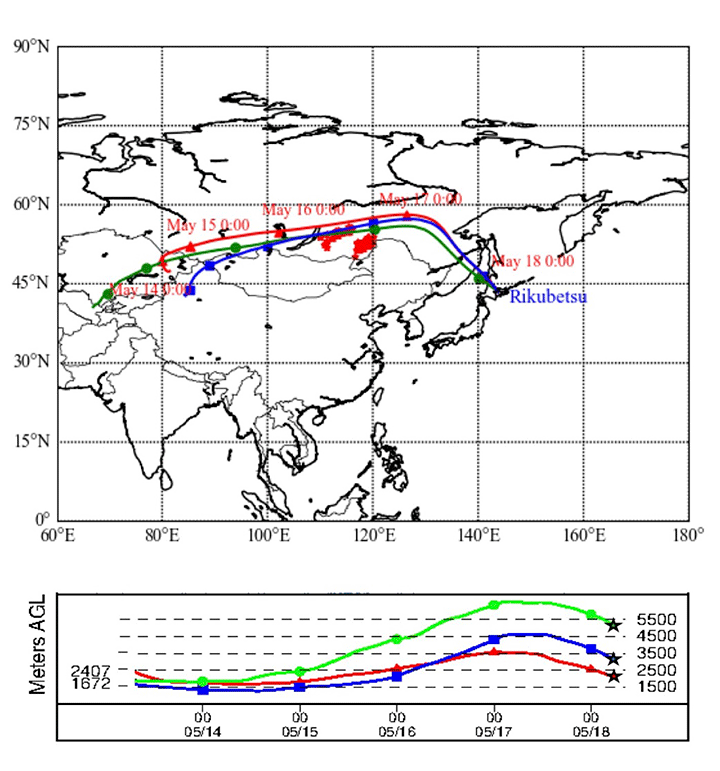Recent Research Results Long-range transport of CO and aerosols from Siberian biomass burning over northern Japan during 18–20 May 2016
Relatively large-scale forest fires have been frequently occurring in Siberia recently. However, the effects of enhanced CO and other gases released from them over northern Japan are not well known.
We observed high CO concentration and dense aerosol layers at 1–6 km altitude in the free troposphere over Rikubetsu, Japan, in ground-based Fourier transform spectrometer (FTS) and lidar measurements during 18–20 May 2016, days after intense forest fires east of Lake Baikal, Siberia. The column-averaged dry-air mole fraction of CO (XCO) was observed to be ~150 ppb from 11:15 to 13:50 JST on 19 May, and peak aerosol optical depths of 1.41 and 1.28 were observed at 15:40 JST 18 May and 11:20 JST 19 May, respectively.
We used the HYSPLIT model to calculate five-day backward trajectories from Rikubetsu on 18 May 2016 at 2, 3 and 5 km altitude. The results show that the air parcels passed over the Siberian forest fires during 16–17 May. By combining these independent datasets such as AERONET aerosol optical thickness at Sapporo, MODIS fire data, and Infrared Atmospheric Sounding Interferometer (IASI) total CO columns, we confirmed that the lidar measurements of enhanced aerosol concentrations and FTS measurements of maximum XCO over Rikubetsu resulted from a persistent smoke plume transported from Siberian forest fires.
The Impact of Siberian forest fires over northern Japan is dependent on the fire scale and frequency of their occurrence and existing meteorological conditions. In addition, anthropogenic CO on the continent may also affect. This research is a case study, so the comprehensive elucidation of their impacts is limited. Long-term monitoring of atmospheric components over Japan and continuous investigation of their origin are desirable.


